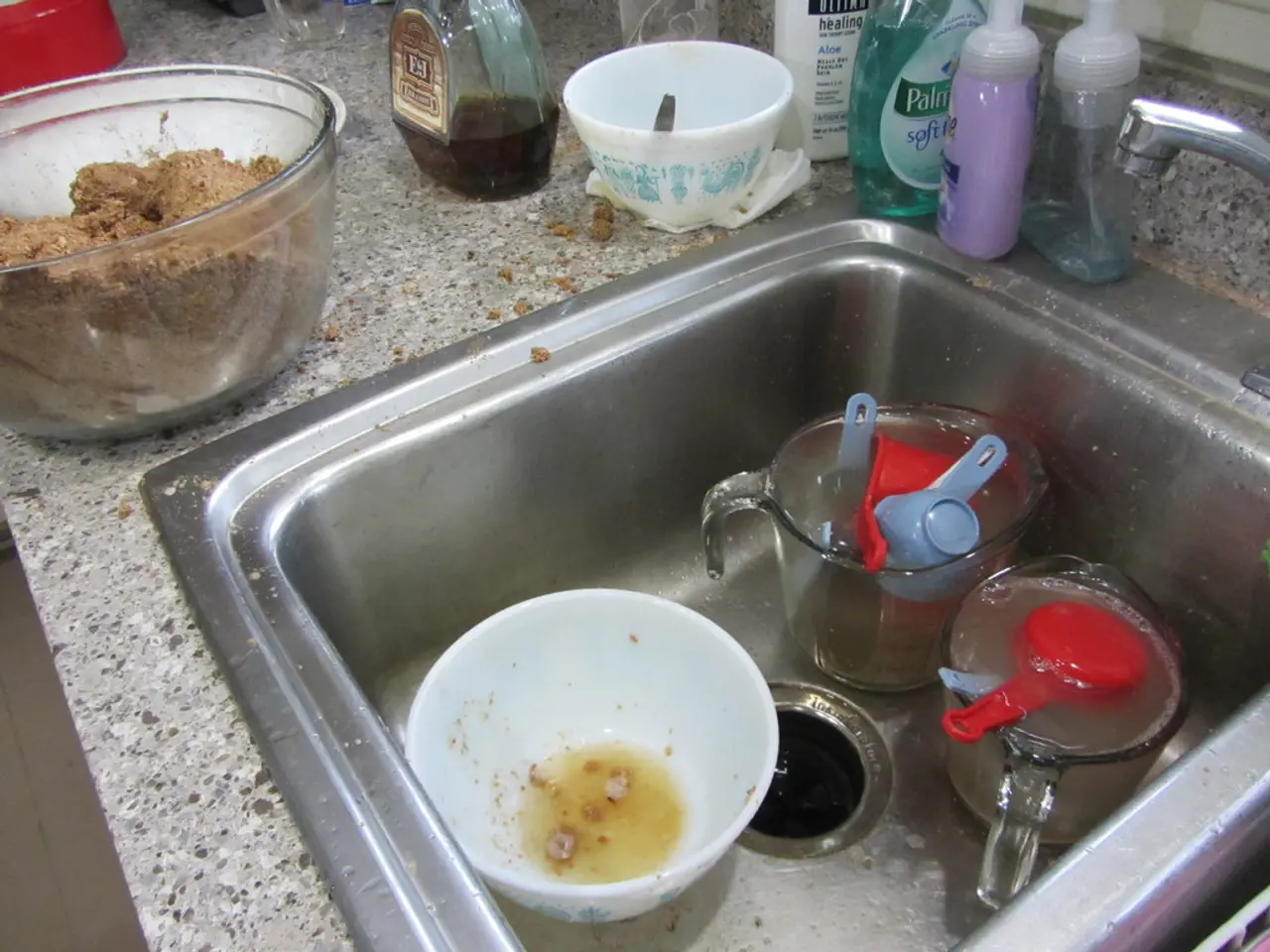Workplace Health and Safety: A Science-Informed Approach to Preventing Harmful Exposure and Ensuring a Clean, Bacteria-Free Environment
In the realm of workplace safety, industrial hygiene plays a crucial role in ensuring the well-being of employees. This scientific discipline focuses on identifying, evaluating, and controlling a wide range of hazards that can potentially cause adverse health effects among workers.
**Major Workplace Hazards Targeted by Industrial Hygiene**
1. **Chemical Hazards**
Exposure to hazardous substances such as toxic chemicals, gases, solvents, acids, and dusts can lead to respiratory issues, skin irritation, poisoning, and long-term illnesses like silicosis or cancer. Examples include cleaning products, paints, welding fumes, pesticides, and silica dust.
2. **Physical Hazards**
Environmental factors that can cause injury or illness, such as noise, vibration, extreme temperatures, radiation, electrical hazards, and inadequate lighting, are also targeted. Preventive measures include hearing protection, climate control, shielding, regular inspections, and proper lighting.
3. **Biological Hazards**
Exposure to organisms or substances produced by living things that can cause disease or infection, like bacteria, viruses, fungi, and bodily fluids, is another area of focus. Infections, allergic reactions, and zoonotic diseases are potential health effects.
4. **Ergonomic Hazards**
Workplace conditions that put strain on the body due to repetitive motions, poor posture, or improper workstation setup can lead to musculoskeletal disorders, chronic pain, and reduced mobility.
5. **Psychosocial Hazards**
Workplace factors that affect mental health and well-being, such as workplace stress, violence, harassment, and long working hours, are also targeted. These factors can lead to anxiety, depression, and decreased productivity.
6. **Mechanical and Environmental Hazards**
Hazards from machinery, equipment, or environmental conditions such as slips, trips, falls, and falling objects are addressed. Preventive measures include the use of personal protective equipment, regular maintenance, and proper workplace design.
**Ensuring Compliance and Safety**
Compliance with industrial hygiene practices includes maintaining exposure records for 30 years, implementing medical surveillance programs, conducting regular workplace inspections, providing appropriate PPE certification, recording incident reports within 24 hours, and adhering to industry-specific guidelines.
**Best Practices for Workplace Sanitization**
Best practices for workplace sanitization include systematic cleaning protocols and advanced air management systems to maintain optimal health conditions. This includes the use of EPA-registered disinfectants for sanitizing high-touch surfaces daily, hospital-grade disinfectant solutions for mopping floors daily, and weekly cleaning protocols involving deep cleaning of ventilation grills and return air vents, sanitizing walls and vertical surfaces up to 6 feet, descaling water fixtures and drains, steam cleaning fabric surfaces and upholstery, disinfecting storage areas and supply closets, and air quality management.
**Investing in Industrial Hygiene**
Investing in industrial hygiene isn't just about meeting standards - it's about fostering a culture of safety that promotes long-term worker health and organizational success. Regular health monitoring through exposure assessments and medical surveillance programs is essential for detecting potential hazards early and ensuring control measure effectiveness.
**Historical Development of Industrial Hygiene**
The historical development of industrial hygiene includes significant milestones such as the documentation of occupational diseases by Bernardino Ramazzini in the 1700s, the creation of the first U.S. state workers' compensation law in 1911, the establishment of the ACGIH in the 1930s, the establishment of OSHA in 1970, and the introduction of ventilation systems in mining operations, development of respiratory protection standards, establishment of exposure monitoring protocols, creation of chemical safety data sheets, and implementation of workplace health surveillance programs.
**The Future of Industrial Hygiene**
Creating a culture of safety that benefits everyone in the workplace requires dedication, commitment, and expertise in implementing control measures and monitoring protocols for industrial hygiene. The field operates on four core principles: anticipating hazards, recognizing risk factors, evaluating through monitoring, and implementing controls through engineering solutions and protective equipment.
In conclusion, understanding and addressing workplace hazards is a vital aspect of maintaining a safe and healthy work environment. By implementing industrial hygiene practices, workplaces can protect their employees from a wide range of hazards and foster a culture of safety that promotes long-term worker health and organizational success.
- Quality management in the health-and-wellness industry can benefit greatly from the scientific principles of industrial hygiene, focusing on maintaining optimal work surroundings and employee safety.
- Adequate education and self-development are crucial for understanding and effectively addressing the numerous hazards that fall under the remit of industrial hygiene, including chemical, physical, biological, ergonomic, psychosocial, mechanical, and environmental threats.
- In the business realm, investing in industrial hygiene practices goes beyond meeting standards; it also contributes to long-term employee health and organizational success, while fostering a culture of safety.
- The science of industrial hygiene has deep roots in history, with key milestones such as the documentation of occupational diseases, the establishment of workers' compensation laws, and the creation of organizations like OSHA playing crucial roles in its establishment and development.
- As technology continues to evolve, so too does industrial hygiene, with advancements in air management systems, disinfectants, and personal protective equipment playing significant roles in creating safer workplaces for employees.
- General news outlets often cover topics regarding industrial hygiene, such as the impact of workplace hazards on employee health and well-being, as well as the introduction of new regulations and industry standards designed to ensure a safer working environment for all employees.




